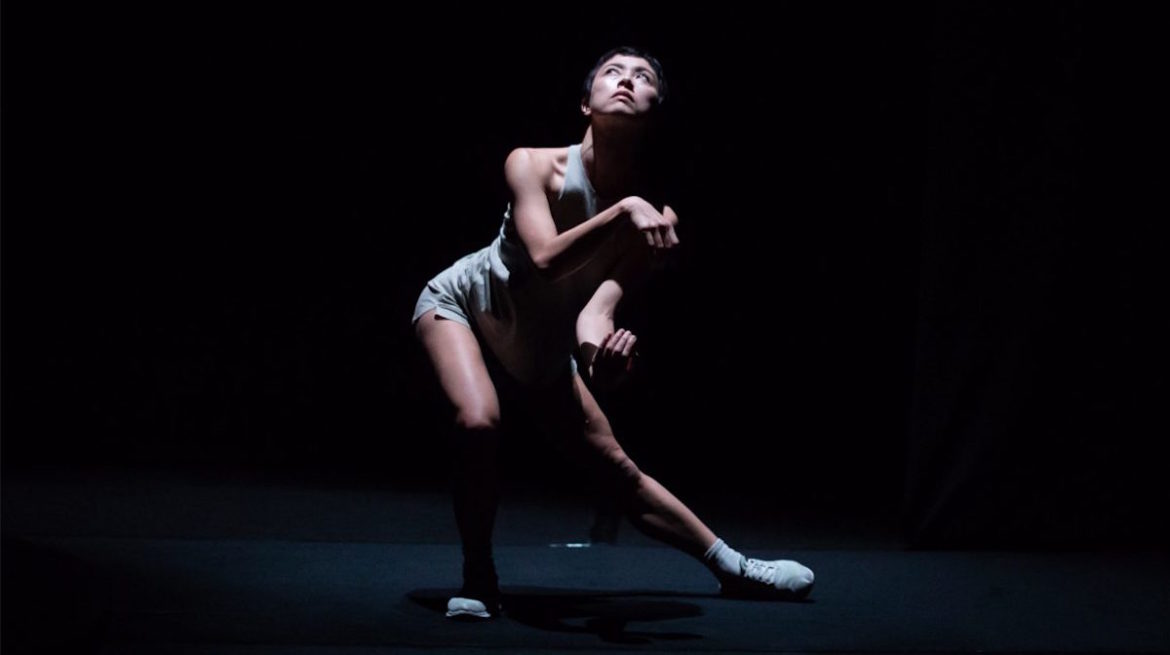‘A profoundly elegant collaboration’: Alison Croggon on Kristina Chan’s meditation on climate change, A Faint Existence
Climate change is the doom of our time, bringing with it the real threat of the extinction of our species. And yet it’s only one of several crises afflicting our planet – mass extinction, plastic pollution in our rapidly heating oceans, deforestation, the drastic fall in insect numbers.
All these problems are linked, and they’re all catastrophic. How can any of us, as individuals, comprehend what it means, let alone combat them? Imagining our individual mortality is difficult enough: how do we imagine the mortality of our entire living planet?
Kristina Chan’s A Faint Existence, part of Dancehouse’s program at this year’s Dance Massive, powerfully expresses what it’s like to live in the age of the Anthropocene. It begins in a complete blackout, the kind that scarfs your eyes with darkness. A faint light – the first of Benjamin Cisterne’s subtle and transformative lighting states – illuminates the presence of a body in front of us, mere paces away, appearing seemingly out of nowhere.
Chan, dressed in t-shirt and shorts, stand still before us, the first brooding, ominous drones of James brown’s score beginning to swell. She lifts herself on her toes, and drops, bang, on her heels. As her heels hit the floor, a huge percussive sound seems to emanate from the action. She does it again, and again. Each time the blow of sound is louder, each time the reverberation is bigger.
It’s a powerful metaphor for the cumulative effect of the individual carbon footprint, how each step we take is amplified into our environment. There’s a distracting rhythmic disruption here, a very tiny lag, much less than a second, between Chan’s heels striking the ground and the percussive sound: the ear and eye are longing for absolute precision. But it’s the only time that I feel that the performance is out of whack.
The sound builds to a climax, which prompts another blackout. There’s a rush of cool air on our faces. When we see Chan again, she is lying on the ground, a prone, vulnerable, arched body picked out of the darkness. Above her, a huge swathe of fabric, lit in a chaotic variousness of colours, is billowing wildly in the turbulence. This is a stunning image, at once beautiful and terrifying.
Darkness again, but not so dark: now we can see the lighting rig above, outlines picked out in gold light. The light lifts and we can see that the stage floor is dominated by a huge, slightly raised circle. Chan is stage right, twisting her body in a series of articulations that seem somehow unhumanlike: at one point I have an optical illusion that she is two creatures, one in front of the other. Her face constantly turns upward, looking apprehensively at the sky.
She gradually makes her way around the circle. The lighting changes, and the circle, which up to now has been dark, illuminated only by a faint light beneath it, is now swept with a wash of blue. The globe, most likely; but also perhaps the circle of our own individuality. She is now inside the circle, writhing, post-human, biting her hands, her arms. She steps outside the circle, dancing wildly. She steps inside, and walks slowly backward around the rim of the circle, step by step by step…
It’s a profoundly elegant collaboration between all the artists: the design elements – Cisterne’s subtle but powerful lighting, Clare Britton’s startlingly simple stage – perfectly frame and amplify Chan’s performance. James Brown’s score is remarkably good, a carefully worked sequence of electronic beats and drones that registers viscerally.
The whole is deeply engrossing, a series of meditations on the violence of the transformations that are overtaking us, and the fragility of our bodies and minds in the face of them. But it’s not actually a despairing work: Chan expresses states of futility, panic and despair that transform into the emergent qualities of a slow, difficult resolution. Which feels to me like a true assessment.
A Faint Existence, choreographed and performed by Kristina Chan. Designed by Clare Britton, lighting design by Benjamin Cisterne, composition by James Brown, dramaturgy by Victoria Hunt, development dramaturgy by Tahli Corin. Studio 221, Victorian College of the Arts, Dancehouse at Dance Massive. Closed.

